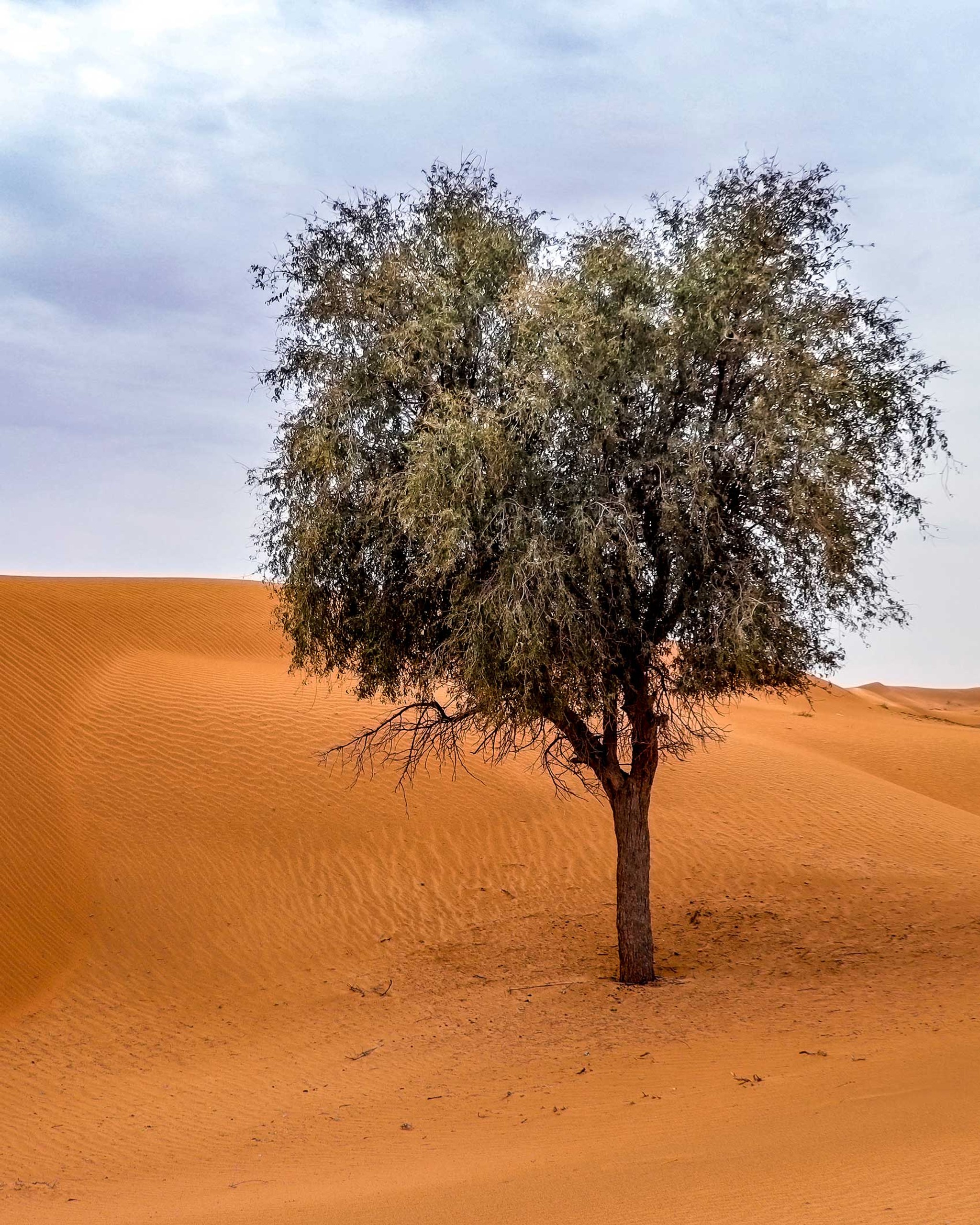Church Forest, Ethiopia

Photography by: Kieran Dodds
100 years ago Ethiopia was blanketed by 45% forest and now that figure is down to just 5%. Part of the surviving remnants are over 1000 ‘sacred forests’ found protecting Ethiopia’s orthodox churches, that act as living stands of biodiversity amongst the brown overgrazed farmlands.
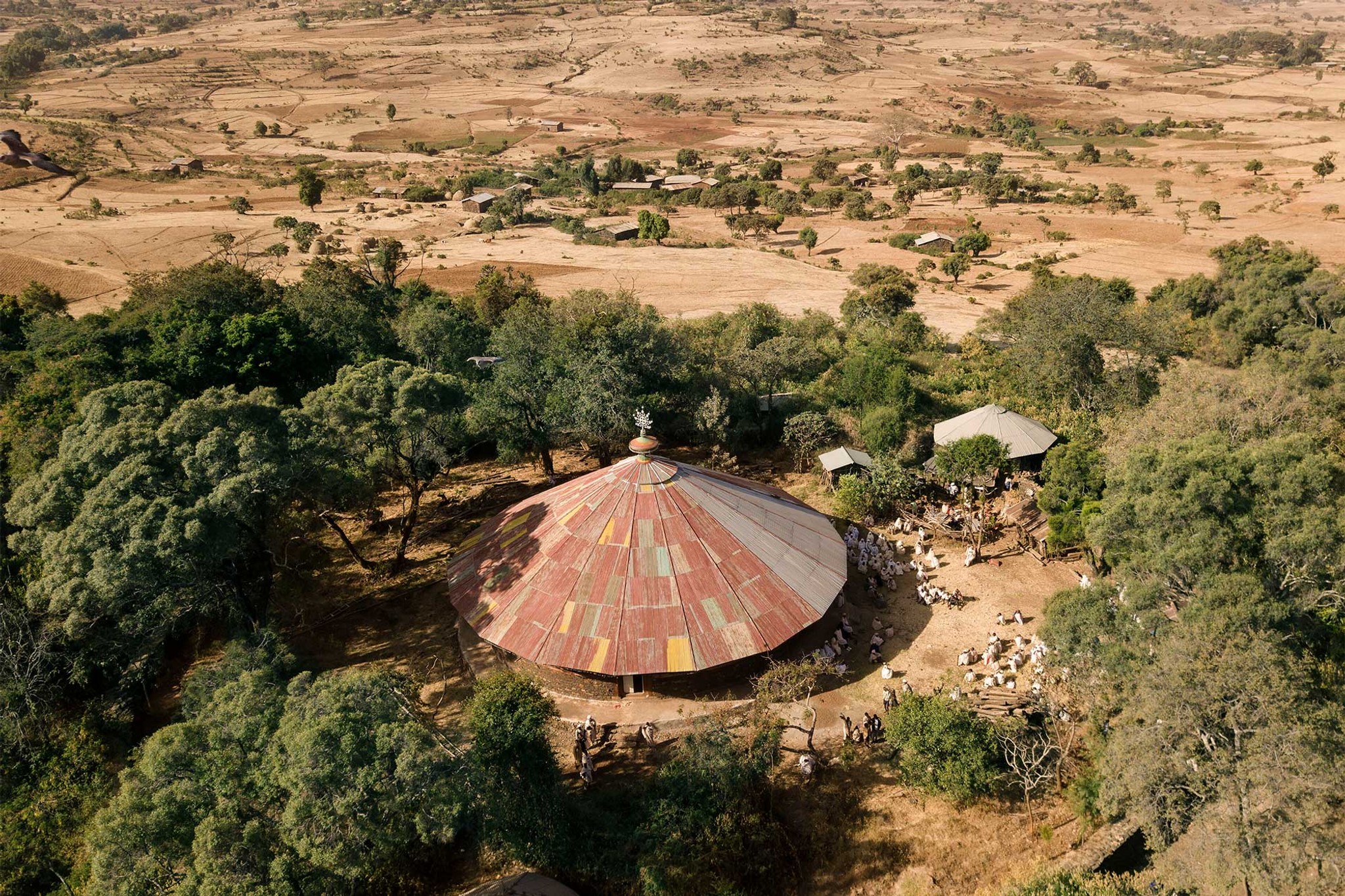
These small clusters of ancient trees, each about 2km away from the next, ensure that the local people are never far from the forests that are so deeply rooted in their social and spiritual lives.They are used as community centres, meeting places and schools and provide the only shade for miles.
Each dot of green stands out on the landscape dramatically because they are some of the only trees left in a country that’s experienced widespread deforestation. Some of the sacred forests are more than 1,000 years old and these precious trees have thankfully been spared thanks to conservation as a by-product of religious stewardship.

The forests are thought of as particularly sacred because each houses a tabot in the centre of the church, which is thought to be a replica of the original Ark of the Covenant. The trees are seen as ‘clothing’ for the church, part of the church itself, which is why just a small ring of trees – those closest to the church – has been protected, creating tiny forests with fields pushing right up to the edges.
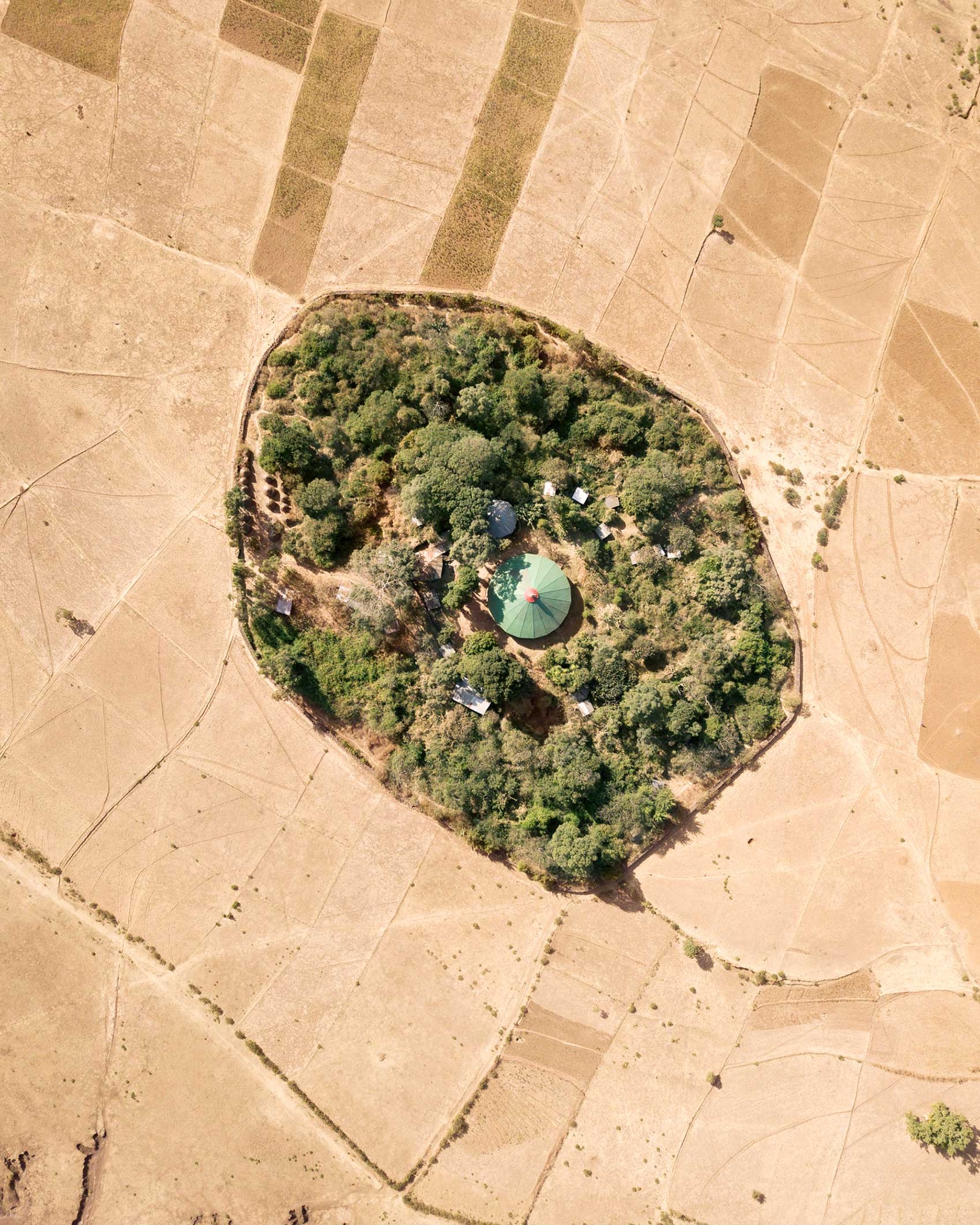
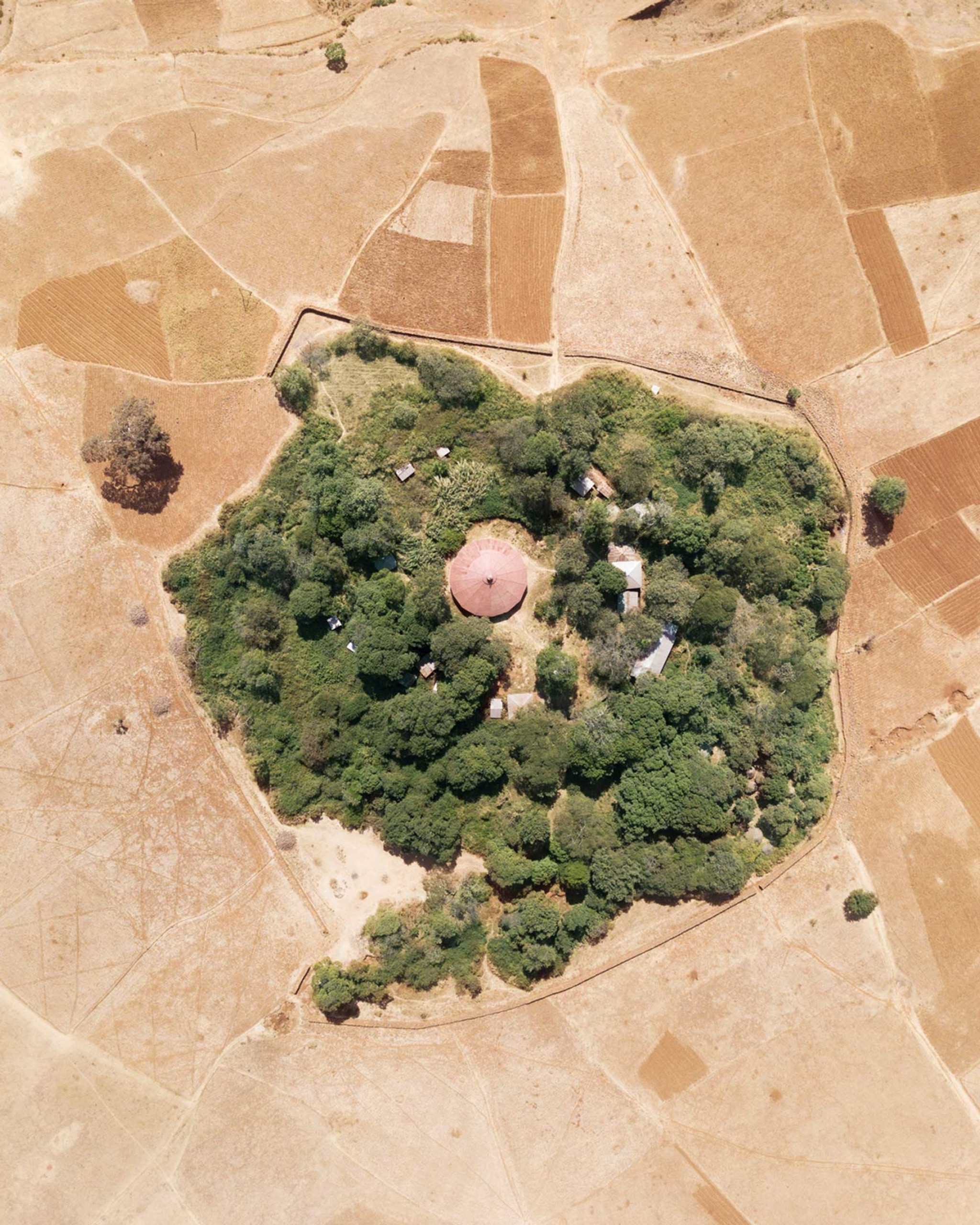
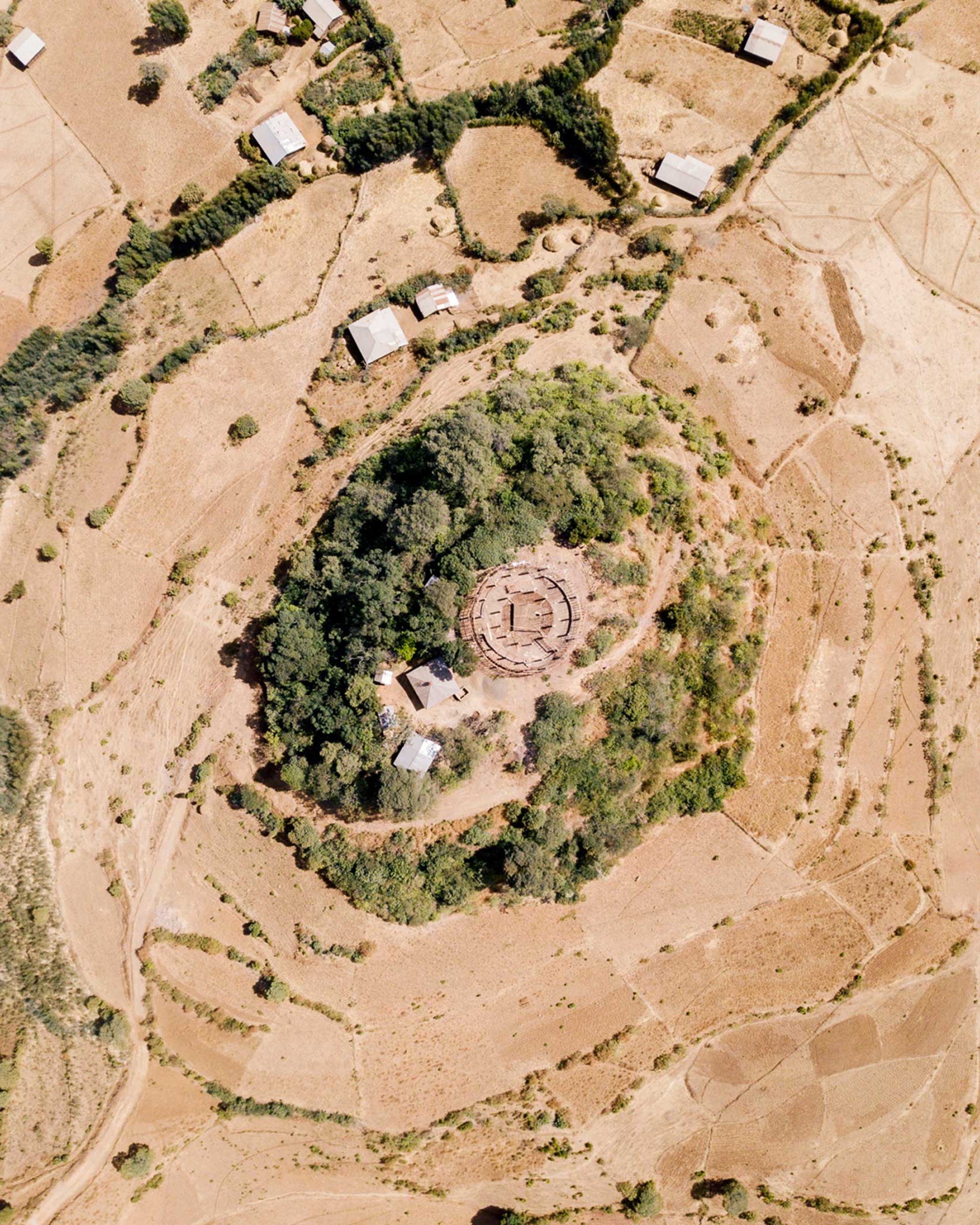
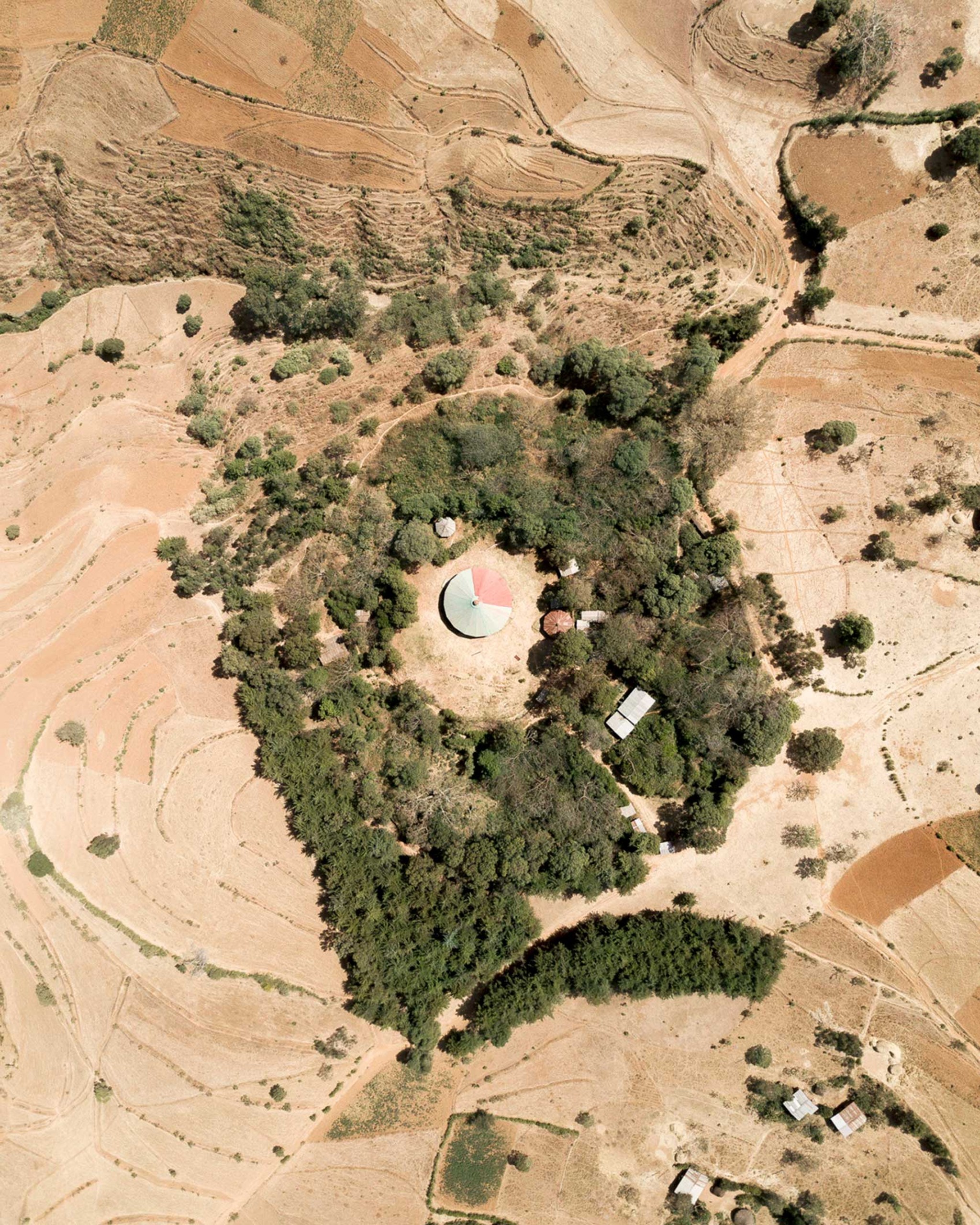
Areas like these sacred forests are immensely valuable from an ecological point of view and should continue to be protected at all costs. They contain precious genetic purity and diversity and should be seen as living nurseries that could hopefully some day be used as a basis to reforest the surrounding lands.




